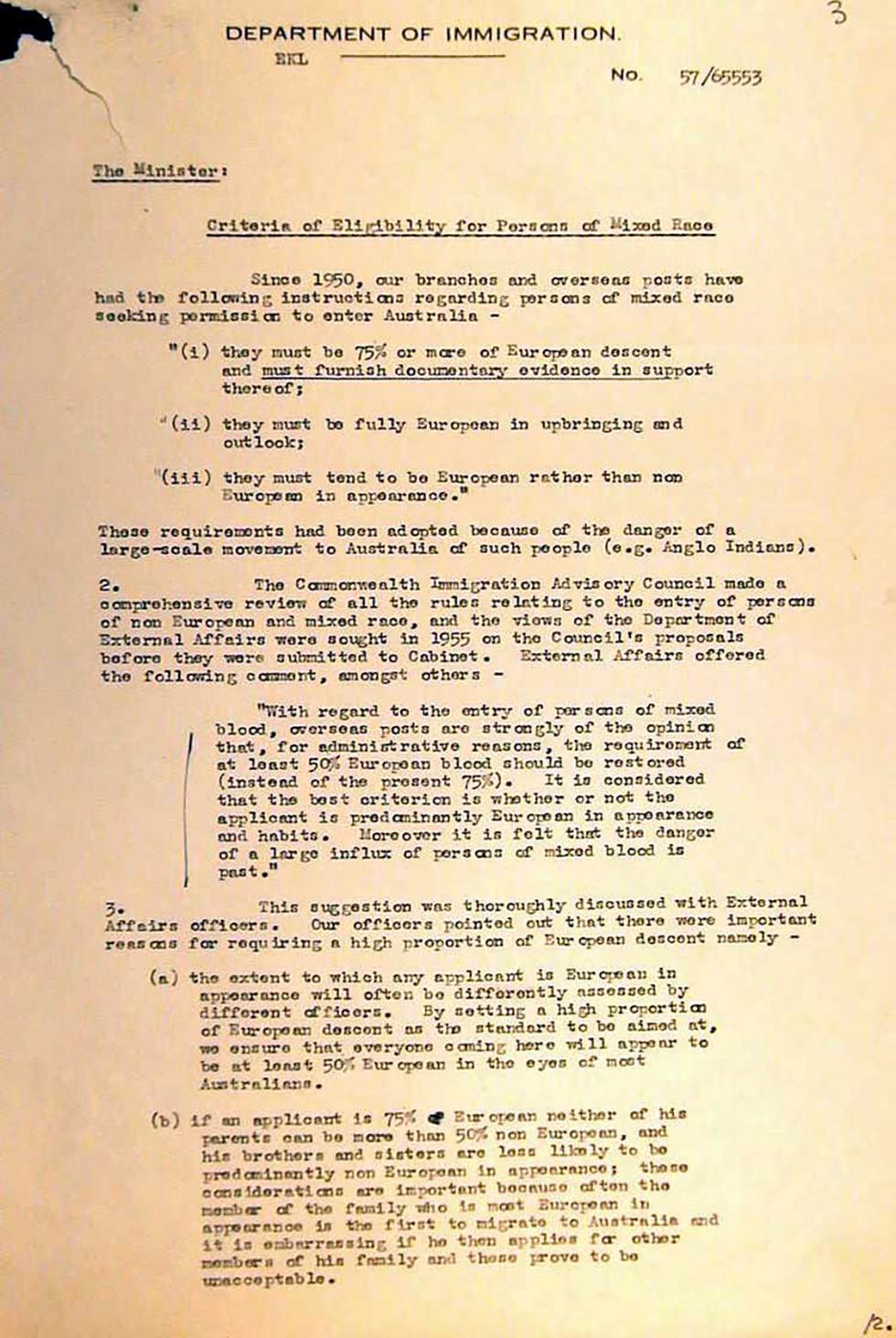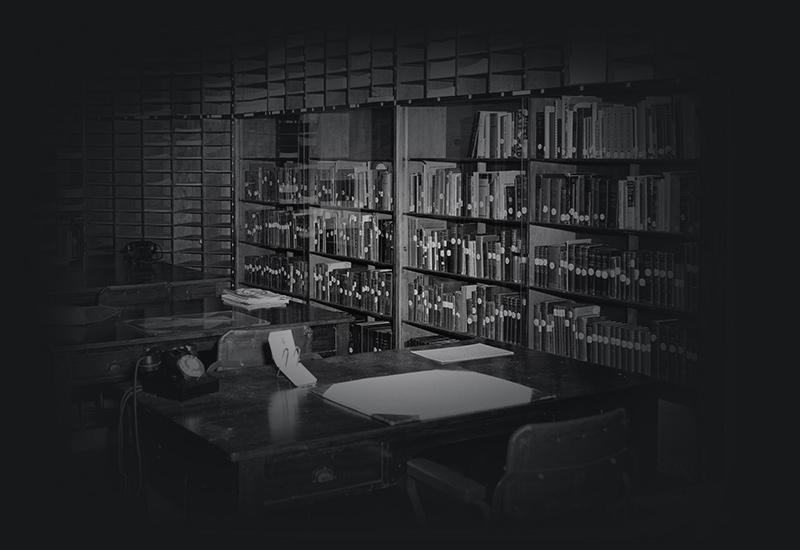
Memo to the Minister for Immigration

Memo to the Minister for Immigration
Aboriginal and Torres Strait Islander people should be aware that the National Archives' website and collection contain the names, images and voices of people who have died.
Some records include terms and views that are not appropriate today. They reflect the period in which they were created and are not the views of the National Archives.


Memo to the Minister for Immigration

Memo to the Minister for Immigration
[Page 1]
[Letterhead in black ink:] DEPARTMENT OF IMMIGRATION.
[Handwritten in top right corner:] 3
EKL
NO. 57/65553
[Underlined] The Minister:
[Underlined heading:] Criteria of Eligibility for Persons of Mixed Race
Since 1950, our branches and overseas posts have had the following instructions regarding persons of mixed race seeking permission to enter Australia –
"(i) they must be 75% or more of European descent and [underlined] must furnish documentary evidence in support [end underline] thereof;
"(ii) they must be fully European in upbringing and outlook;
"(iii) they must tend to be European rather than non European in appearance."
These requirements had been adopted because of the danger of a large-scale movement to Australia of such people (e.g. Anglo Indians).
2. The Commonwealth Immigration Advisory Council made a comprehensive review of all the rules relating to the entry of persons of non European and mixed race, and the views of the Department of External Affairs wars sought in 1955 on the Council’s proposals before they were submitted to Cabinet. External Affairs offered the following comment, amongst others –
[Quote indented and emphasised with a vertical line drawn alongside the paragraph.] "With regard to the entry of persons of mixed blood, overseas posts are strongly of the opinion that, for administrative reasons, the requirement of at least 50% European blood should be restored (instead of the present 75%). It is considered that the best criterion is whether or not the applicant is predominantly European in appearance and habits. Moreover it is felt that the danger of a large influx of persons of mixed blood is past."
3. This suggestion was thoroughly discussed with External Affairs officers. Our officers pointed out that there were important reasons for requiring a high proportion of European descent namely –
(a) the extent to which any applicant is European in appearance will often be differently assessed by different officers. By setting a high proportion of European descent as the standard to be aimed at, we ensure that everyone coming here will appear to be at least 50% European in the eyes of most Australians.
(b) if an applicant is 75% ['of' - word blacked out] European neither of his parents can be more than 50% non European, and his brothers and sisters are less likely to be predominantly non European in appearance; these considerations are important because often the member of the family who is most European in appearance is the first to migrate to Australia and it is embarrassing if he then applies for other members of his family and these prove to be unacceptable.
/2.
[Page] 2.
4. The External Affairs officers said that their main concern was over the difficulty of securing evidence of descent. They had suggested a "50%" standard because then it would only be necessary for the applicant to produce one parent who was clearly of entirely European descent, and his eligibility would be established. Our officers had to point out that this would not solve a great many cases because the majority of applicants had no "fully European" parent – usually both parents were themselves of mixed race.
5. What had to be admitted however was that it is impossible for applicants to produce satisfactory "documentary evidence" of descent, as laid down in the instructions. Even if applicants can name their ancestors and their birthplaces for generations back, and produce birth certificates in support of their statements, this usually still does not prove anything as regards the race [underlined] of each ancestor. In effect the requirement of "documentary evidence", if administered, would amount to an absolute bar to entry - and this could not be sustained in cases where applicants are British subjects and have only the merest suggestion, in their appearance, of non European ancestry. In such cases we have in fact been obliged to rely simply on the person's appearance.
6. External Affairs have been advised that consideration will be given to rewording of our instructions to overseas posts so as to make them possible of exact fulfilment, without of course altering the policy underlying the instructions.
7. I would recommend therefore that the criteria for persons of mixed race should be amended as follows –
(i) their appearance must be such as to satisfy the officer that they are of 75% or more European descent and that they will have no difficulty in being accepted as Europeans in Australia;
(ii) they must be fully Europeans in upbringing, outlook, mode of dress and of way of living;
(iii) in cases where it becomes known, e.g. by the applicant's own statement, that one of the applicant's parents is fully non European, his ability to satisfy conditions (i) and (ii) shall not entitle him to admission.
[Handwritten signature in black ink:] Tasman Heyes
(T.H.E Heyes)
Secretary.
[Handwritten:] 21/3/57
[Handwritten annotation in blue ink:] Approved. AT
[Stamped:] 26 MAR 1957
Learn how to interpret primary sources, use our collection and more.
